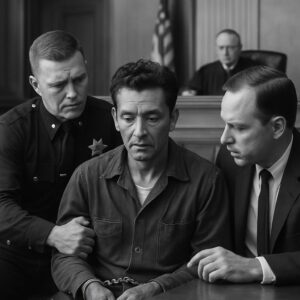Have you ever watched a crime drama and heard the phrase, “You have the right to remain silent”? That line, so familiar now, didn’t always exist in American law. It became a fundamental part of police procedure thanks to a landmark Supreme Court ruling on June 13, 1966, in the case of Miranda v. Arizona. This ruling fundamentally transformed how law enforcement interacts with suspects, safeguarding individual rights and shaping the justice system we know today.
The story begins with Ernesto Miranda, a man arrested in Phoenix, Arizona, accused of kidnapping and rape. During police questioning, Miranda confessed to the crimes, but here’s the catch—he was never informed of his right to remain silent or to have a lawyer present. His confession became the primary evidence used against him at trial. Miranda was convicted, but his legal team appealed, arguing that his confession was obtained without informing him of his constitutional rights, thus violating the Fifth Amendment protection against self-incrimination.
Before this ruling, police interrogation techniques were often aggressive and sometimes coercive. Suspects could be pressured into confessing without understanding their rights, leading to wrongful convictions and injustices. The Supreme Court had to answer a crucial question: Should individuals be explicitly informed of their rights during police interrogations?
On June 13, 1966, the Court ruled in a 5-4 decision that suspects must be informed of their rights before custodial interrogation. This included the right to remain silent and the right to an attorney, whether appointed or privately retained. These warnings became known as “Miranda Rights,” and they created a clear, constitutional safeguard to protect suspects from self-incrimination and ensure fair police practices.
The impact was immediate and profound. Police departments across the country quickly adopted the requirement to read Miranda warnings, fundamentally changing law enforcement’s approach. The ruling acknowledged the power imbalance between police and suspects, recognizing that without proper warnings, confessions could be unreliable or coerced. It reinforced the principle that the justice system must protect individual freedoms, even when prosecuting serious crimes.
Miranda’s case also sparked widespread debate. Critics argued that the ruling tied law enforcement’s hands and made it harder to solve crimes, while supporters celebrated it as a crucial victory for civil liberties. Over time, Miranda Rights became an iconic symbol of the American justice system’s commitment to fairness and due process.
The phrase “You have the right to remain silent” has since entered the public consciousness, reminding everyone that the law respects individual dignity and protects against abuse of power. It highlights that the presumption of innocence is not just a legal concept but a lived reality that must be actively upheld.
Even today, the legacy of Miranda v. Arizona endures. It continues to influence police procedures, court rulings, and public understanding of justice. Knowing your rights has empowered countless individuals to navigate the legal system more fairly, ensuring that the path to justice respects both society’s safety and individual freedoms.
The establishment of Miranda Rights is a powerful reminder that laws evolve to protect people, especially those vulnerable to injustice. It underscores how one Supreme Court decision can ripple through generations, shaping not just legal practice but the very idea of justice itself.

